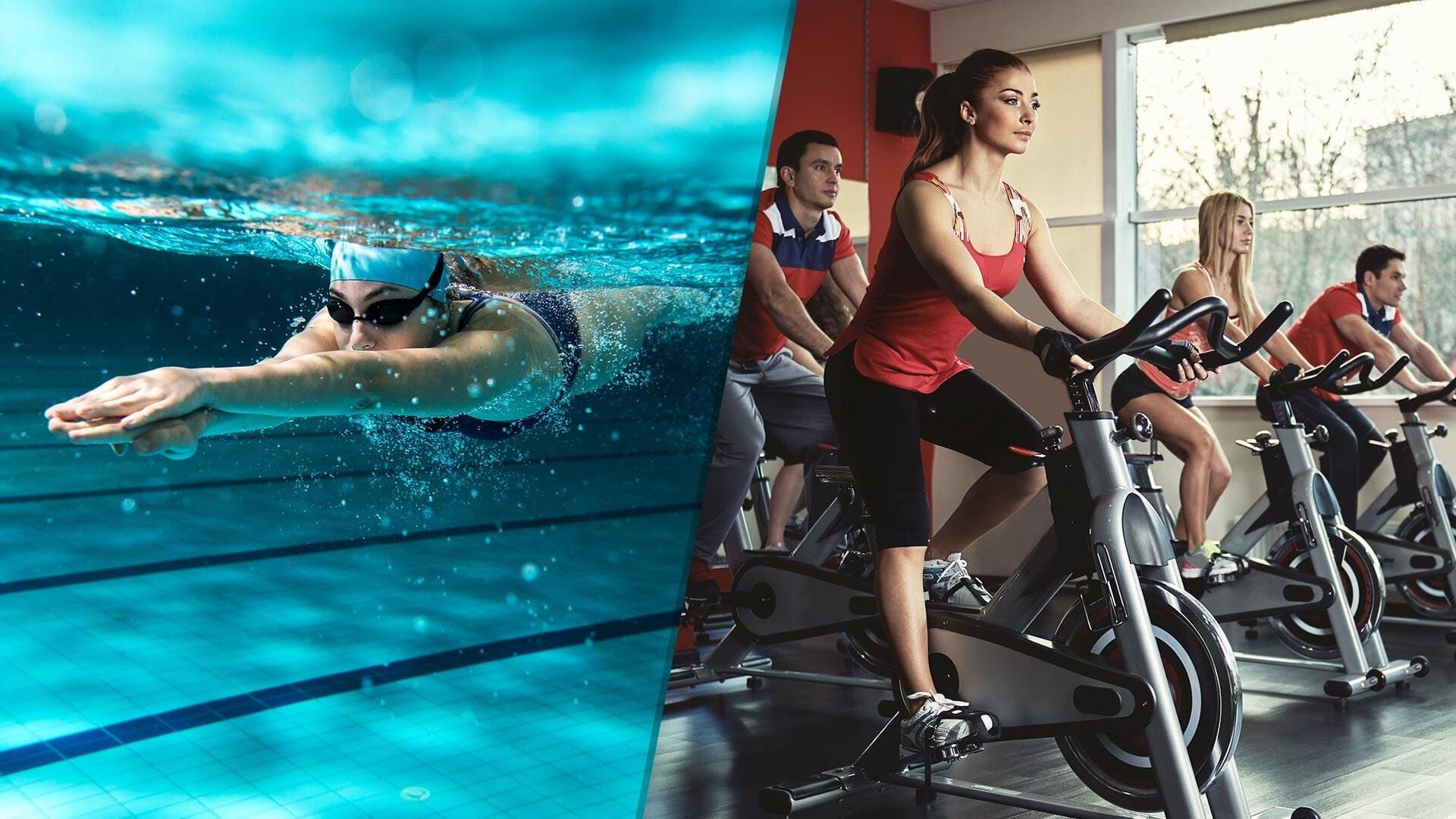
Cycling or swimming: Better option for your heart and lungs?
What's the story
Cycling and swimming are two of the most popular cardiovascular exercises that can do wonders for your heart and lungs. Both activities are low-impact and can be performed by people of all ages and fitness levels. While cycling is usually done on a stationary bike or outdoors, swimming provides a full-body workout in water. Knowing the benefits of each can help you choose the best exercise for your cardiovascular health.
#1
Cycling: A heart-friendly workout
Cycling is an excellent way to improve cardiovascular health as it strengthens the heart muscles and improves blood circulation. Regular cycling can lower resting heart rate and blood pressure levels. It also helps in burning calories, which can contribute to maintaining a healthy weight. Cycling outdoors also exposes you to fresh air, which can further enhance respiratory function.
#2
Swimming: Full-body cardiovascular benefits
Swimming, meanwhile, provides a full-body workout that engages multiple muscle groups at once. This holistic engagement boosts heart function by ensuring that blood flows evenly across the body. Swimming also improves lung capacity as it requires controlled breathing patterns while performing different strokes. The resistance of water makes it an effective way to build endurance without putting stress on joints.
#3
Comparing calorie burn rates
When it comes to calorie burning, both cycling and swimming are effective but differ based on intensity and duration. On average, a 70 kg person burns around 400 calories per hour cycling at a moderate pace, while swimming laps at a moderate pace can burn roughly 500 calories in the same time frame. The difference highlights how vigorous efforts in either activity can result in significant calorie expenditure.
Tip 1
Accessibility and convenience factors
Accessibility plays an important role in choosing between cycling or swimming for cardiovascular benefits. Cycling requires minimal equipment like a bike or stationary bike, making it easier to incorporate into daily routines without much hassle. Swimming may require access to pools or open water bodies but offers versatility with different environments like indoor pools during colder months or outdoor lakes during summers.